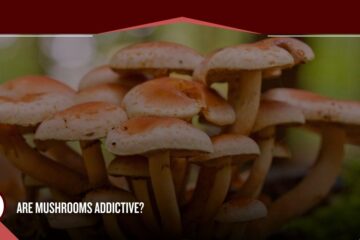Methamphetamine (meth) is a powerful, highly-addictive drug. People may become addicted to meth after using it for just a short period. Using meth frequently can change the way the brain and body function. These changes can make it almost impossible for people to stop using meth when they want to, even when facing extreme consequences or risks.
Recognizing meth addiction is the first step toward getting life-saving treatment. This article will explore meth addiction and how to identify it.
What you will learn:
- How meth abuse and addiction develop
- The physical and psychological symptoms of meth addiction
- What to expect in a meth addiction treatment program
- Where to find treatment and support
Meth abuse can cause severe short and long-term effects on your health and well-being. If you or someone you love lives with methamphetamine addiction, you must seek treatment to safely stop using it and begin your recovery.
Reach out to the Alamo Behavioral Health specialists to learn about the signs and symptoms of methamphetamine abuse. Our intake staff can answer your questions, help you choose the right level of care to meet your needs, and schedule an intake assessment.
Methamphetamine Abuse and Addiction: An Overview
Meth is a common slang term for a drug called methamphetamine. Meth is an illegal, synthetic drug.[1] People create meth by combining amphetamine and dangerous chemicals. Making meth is very dangerous, but using it can be even more hazardous.
There are other slang terms for meth, including:
- Blue
- Crystal meth
- Crank
- Hawaiian salt
- Hot ice
- Ice
- L.A. ice
- Shards
- Shaved ice
- Speed
- White
- Zip
Meth users ingest this highly-addictive drug by swallowing, inhaling, or smoking it. Meth quickly reaches the bloodstream and causes a range of side effects. It is a central nervous system (CNS) stimulant that causes many short-term symptoms, including:[2]
- Rapid heart rate
- Increased energy
- Elevated blood pressure
- Appetite loss
- Euphoria
Because meth is an addictive substance, people may want to use it more often. Over time, people may develop tolerance to it, meaning they must take higher doses to get the desired effects.
After a period of repeated meth use, users may develop physical tolerance or addiction. Methamphetamine addiction is a complex condition that can be difficult to overcome. However, detox, comprehensive treatment, and continuing support can give people the best chance at lifelong recovery.
8 Signs of Meth Addiction
Long-term meth abuse can cause severe health problems and other complications. Recognizing substance abuse and seeking treatment is critical to recovery.
Here are some of the effects of meth addiction you may recognize.
1. Aggression
Meth’s stimulant effects can make users irritable, aggressive, and even violent. People who are not typically angry or violent may suddenly exhibit these disturbing behaviors.[3]
Sudden changes in a person’s behavior may indicate they are living with substance use disorder (SUD) and require treatment.
2. Hallucinations and delusions
People who abuse meth may experience hallucinations, meaning they see or hear things that are not there. Meth users may also have delusional beliefs, meaning that they believe things that are not true.[3]
These extreme behavioral changes can alert others that a person is struggling with meth abuse or addiction.
3. Paranoia
Meth abuse can cause people to feel anxious, afraid, or even paranoid. People who use meth may seem overly aware of their surroundings, suspicious of others, or have beliefs that aren’t true.
4. Weight loss
People who abuse meth often have significant, sometimes dangerous, weight loss. Meth stimulates CNS activity and can result in poor appetite and extreme weight loss. Over time, people who abuse meth may become dangerously underweight and malnourished.[4]
Quick, extreme weight loss can indicate someone is struggling with meth abuse.
5. Dental problems
Meth users often have significant dental problems from neglect and the effects of the drug. People may lose teeth or have severe decay. This problem is so common in people with meth addiction that it has a name: “meth mouth.”[5]
6. Skin infections
People who abuse meth may feel a crawling, itchy sensation of bugs under the skin. People often pick or scratch their skin, which can result in open wounds, infections, and scarring.
7. Memory problems
Meth use changes the way the brain works. The effects of the drugs can impact memory, concentration, and focus. It can be hard for people with meth addiction to maintain attention on a task. People may become easily confused and disoriented.[6]
8. Depression
People with meth addiction may develop severe depression that requires treatment. Depression and other symptoms of meth addiction can be a clear sign that somebody needs addiction treatment and support.
Find Methamphetamine Addiction Treatment
Meth addiction treatment begins with detox to help people manage withdrawal. Then, people must receive comprehensive treatment that includes mental health support, medical care, and education.
Learn more about recovering from methamphetamine addiction by contacting the Alamo Behavioral Health specialists. Our intake team can schedule an intake assessment so that you can begin your recovery journey quickly.
References:
- Drug Enforcement Administration (DEA): Methamphetamine
- National Institute on Drug Abuse (NIDA): Methamphetamine
- National Institute of Health (NIH): Methamphetamine Use and Violent Behavior: User Perceptions and Predictors
- Research Gate: Histological Changes in Adipose Tissue: An Alarm When Methamphetamine Is Targeted for Weight Loss Purposes
- National Institute of Health (NIH): Methamphetamine use and oral health-related quality of life
- National Institute on Drug Abuse (NIDA): What are the long-term effects of methamphetamine misuse?







